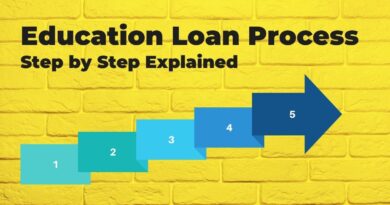NPA Loan Recovery Process in India
NPA Loan Recovery Process in India
All loans and advances are required to be reviewed and classified into two principal categories at regular intervals as per Reserve Bank of India guidelines as under:
- Performing Assets / Standard Loan Account / Regular Loan Accounts: Performing Assets / Standard Loan Accounts / Regular Loan Accounts where the advances are generating income for the Bank. When you pay your loan EMI on time then your loan is in the Performing Assets category.
- Non-Performing Assets (NPAs) : An asset is considered non-performing when it stopped to generate income for the bank. In simple words, if you stopped paying installments of your loans means the bank is not earning from the loan given to you so it is not performing.
Table of Contents
Loan Asset Categories or Loan Asset Classification
Based on the norms stipulated by the Reserve Bank of India, the Banks are required to classify all the loan accounts into the following categories at stipulated intervals. This is the most important concept before understanding the NPA Loan Recovery process in India.
a. Performing Assets: Standard assets
b. Non Performing Assets
- Substandard
- Doubtful
- Loss

(a) Performing Assets :
Standard assets:
A standard asset is one where the interest and/ or installments are being paid on time and also the account does not suffer from any other credit weakness. No irregularity in accounts like stack statements submission, and submitting financial papers yearly.
(b) Non-Performing Assets:
Based on the period of irregularity and prospects of recovery the Non Performing Assets are classified into the following three categories.
- Sub-Standard Assets: Where the loan remains NPA for less than 12 months or for the same period. Such loans will have a credit crunch that puts liquidity at risk If there is no deficit, the bank is likely to incur some losses Corrected.
- Doubtful Assets: Where the loan has remained in Sub Standard category for a period of 12 months. It has added characteristics that the weakness makes collection or liquidation in full, highly questionable, or improbable on the basis of currently known facts, conditions, and values, the asset will be classified as doubtful.
- Loss Assets: Loss Assets is one where loss has been identified by the bank or by the internal/external auditor or by the RBI inspector but the amount has not been written off wholly. In other words, such an asset is considered uncollectible and of such little value that its continuance as a bankable asset is not warranted although there may be some salvage or recovery value.
Important to know about the Loss of Assets
- In respect of accounts where there are potential threats for recovery, on account of erosion in the value of security, by less than 50% of the realizable value assessed by the bank, the asset is classified directly as doubtful. If the realizable value of the security is insignificant i.e. less than 10% of outstanding or less than Rs. 1 lakh, the asset is straightaway classified as a loss asset.
- If the realizable value of the security is insignificant i.e. less than 10% of outstanding or less than Rs. 1 lakh, the asset is straightaway classified as a loss asset.
NPA loan recovery in different types of loans
Advances Secured by Term Deposits, National Savings Certificates, Kisan Vikas Patras, and Surrender Value of LIC Policies:
Advance accounts against the above securities need not be treated as NPA provided adequate margin is available. Interest on such accounts may be taken to the income account on due dates so long as outstanding are covered by the value of the security.
It may be noted that advances against gold ornaments do not qualify for this relaxation.
What happens if Gold Loans became NPA:

NPA Loan Recovery process in Gold Loans
A loan granted against the security of the gold ornaments for non-agricultural purposes will be treated as NPA if the account remains overdue for more than 90 days. However, if the loan is availed for agricultural activities (Agri Gold Loans), the account will be treated as NPA if it remains overdue for 2 crop seasons in case of short-duration crops and one crop season in case of long-duration crops.
NPA Loan Recovery process in Gold loans is somewhat easy for banks because banks can auction your Gold Ornaments if your Gold loan remains NPA for Three months.
NPA loan recovery and Asset Classification norms for Agri Activities:
A loan granted for a short-duration crop will be treated as NPA, if the installment of principal and/or interest thereon remains overdue for two crop seasons, beyond the due date. A loan granted for long-duration crops will be treated as NPA, if the installment of principal and/or interest thereon remains overdue for one crop season, beyond the due date.
For the purpose of these guidelines, “long duration” crops would be crops with a crop season longer than one year and crops that are not “long duration” crops would be treated as “short duration” crops. The crop season for each crop, which means the period up to harvesting plus marketing of the crops raised, would be as determined by the State Level Bankers Committee in each State.
Two crop seasons are perceived as under:
- If a farmer is growing crops only in the Kharif season (land remaining fallow during the rest of the year), two crop seasons will spread over two years. Similar is the case if crops are grown only in the Rabi season by a farmer. In such cases, the repayment date will be fixed once a year.
- If the farmer is growing Kharif as well as Rabi Crops, two crop seasons will spread over one year period. There will be two repayment dates during the one-year period.
- If the farmer is growing one (mostly the same) cash crop (Kharif or Rabi) over a major area owned by him and a small area is used for growing cereals/pulses for domestic requirements and meeting exigencies (not resulting in sizeable marketable surplus), in such an event the entire repayment of the loan will logically come once a year on harvesting and marketing of cash crop only.
Since repayment is fixed once a year (synchronizing with harvesting and marketing of cash crops) and another crop grown over a smaller area is incidental, in such cases, two crop seasons will spread over two years. Depending upon the duration of the crop raised by an agriculturist, the above norms would also apply to agricultural term loans.
Loans granted with a moratorium period
In the case of bank finance given for agricultural projects with a long gestation/moratorium period such as for setting up of a Mango orchard or Rubber plantation, where a moratorium is available for payment of interest as per the terms of sanction, payment of interest becomes ‘due’ only after the moratorium or gestation period is over.
Therefore, such amounts of interest do not become overdue and hence do not become NPA, with reference to the date of debit of interest. Such an account would remain “Standard” during the moratorium or gestation period even if the interest debited during this period remains unpaid.
Accounts with a moratorium or gestation period for payment of interest and/or principal amount will become overdue and NPA after the due date for payment of interest and/or principal amount, if uncollected for 2 crop seasons for short-duration crops and one crop season for long duration crops, as the case may be.
In this connection, it is suggested that the deferment of payment of interest and/or principal amount during gestation or moratorium period be specifically mentioned as one of the terms of sanction at the time of sanction as well as in the arrangement letter. Further, the amount of interest to be debited to the loan account during the moratorium period be capitalized to avoid outstandings exceeding the sanctioned limits during the moratorium or gestation period.
Important Note: Remember to request the bank that the loan interest debited to the loan account should be differed up to the date of the first installment, so you need not pay interest before generating income from the project.
Asset Classification to be borrower-wise and not loan account wise
One loan is NPA then your all loan became NPA even if you pay installments of other loans on time.
Most important: If your one loan becomes NPA in any bank then all your loans in all the banks became NPA, currently there is not a sufficient financial data synchronization system across the bank to make you all loan NPA but it will be implemented in the near time with help of AADHAR and NPA Loan Recovery process will be easier for banks.
However, there are a few exceptions to this rule, like advances granted to Primary Agricultural Cooperative Societies /Farmers’ Service Societies under the on-lending system, and Advances under restructuring/rehabilitation. In respect of loans granted to PACS/FSS under the on-lending system, only that particular credit facility is in default for a period of two crop seasons.
In the case of short-duration crops and one crop season in the case of long-duration crops, as the case may be, after it has become due will be classified as NPA/Sub Standard, and not all the credit facilities sanctioned to a PACS/ FSS.
PROVISIONING NORMS FOR LOANS
This is the main reason why banks suffer more due to NPA, As per RBI guidelines banks have to keep aside a specific amount from their profits this means provisioning, Following is the amount of percentage to keep aside as provision:
| Asset | Provision to be held |
| Standard | 0.25% of the outstanding for direct Agri & SME advances, 1% of the outstanding for personal loans, advances, and loans qualifying as capital market exposures, residential housing loans beyond Rs.20.00 lakhs, and commercial and real estate loans, and 0.40% of the outstanding for all other loans not covered above. |
| Sub Standard | 10% of outstanding for secured sub-standard accounts and 20% of outstanding for unsecured advances/exposures |
| Doubtful up to 1 year | 20% on the secured portion and 100% on the unsecured portion |
| Doubtful more than 1 year & less than 3 years | 30% on the secured portion and 100% on the unsecured portion |
| Doubtful for more than 3 years | 100% of the outstanding |
| Loss assets | 100% of the outstanding |
Important about provisioning
- value of security, including movable as well as immovable, agricultural land / non-agricultural land/mortgage of the house, building, sheds, etc. charged to the bank should be assessed on the balance sheet date every year.
- While arriving at NPA provisioning, balances in the following accounts should be deducted from the outstanding. Interest not collected account (INC). Interest suspense accounts, if any.
- Provision is not required to be made against the value of security like FDR / NSCs / surrender value LIC Policies and a retainable or receivable portion of ECGC / CGTSME covers.
- Letter of credit / Bank Guarantee: Outstanding as on balance sheet date should be checked and those LCs / BGs already expired should be reversed in order to obviate unnecessary load on capital adequacy. Similarly, the value of credit balance / TDR / STDR for which the lien is marked for the LC / BG should be clearly mentioned in the respective column.
Debt restructuring mechanism for Small and Medium Enterprises (SMEs)
Eligibility criteria
These guidelines would be applicable to the following entities, which are viable or potentially viable:
- All non-corporate SMEs irrespective of the level of dues to banks.
- Corporate SMEs, which are enjoying banking facilities from a single bank, irrespective of the level of dues to the bank.
- These corporate SMEs, have funded and non-funded outstanding up to Rs.10 crore under multiple/ consortium banking arrangements.
- Accounts involving wilful default, fraud, and malfeasance will not be eligible for restructuring under these guidelines. However, banks may review the reasons for the classification of the borrower as a wilful defaulter, especially in old cases where the manner of classification of a borrower as a wilful defaulter was not transparent, and satisfy themselves that the borrower is in a position to rectify.
- The willful default provided he is granted an opportunity under the Debt Restructuring Mechanism for SMEs. Such exceptional cases may be admitted for restructuring with the approval of the Board of Directors of the banks only.
- Accounts classified by banks as “Loss Assets” will not be eligible for restructuring.
- In respect of BIFR cases, banks should ensure the completion of all formalities in seeking approval from BIFR before implementing the package.
Upgradation of restructured accounts
The substandard/doubtful accounts, which have been subjected to restructuring, whether in respect of principal installment or interest, by whatever modality, would be eligible to be upgraded to the standard category after the specified period, i.e., a period of one year after the date when the first payment of interest or of principal, whichever is earlier, falls due under the rescheduled terms, subject to satisfactory performance during the period.
Asset classification status During the specified one-year period, the asset classification status of rescheduled accounts will not deteriorate if satisfactory performance of the account is demonstrated during the period.
In case, however, the satisfactory performance during the one-year period is not evidenced, the asset classification of the restructured account would be governed as per the applicable prudential norms with reference to the pre-restructuring payment schedule. The asset classification would be bank-specific, based on the record of recovery of each bank, as per the existing prudential norms applicable to banks.
Repeated restructuring: The special dispensation for asset classification shall be available only when the account is restructured for the first time.
Different Methods of Recovery by Banks
Seizure and Sale of Assets Hypothecated for NPA Loan Recovery
Filing of civil suit/submission of an application under the Revenue Recovery Act etc. for recovery of dues should not be the first resort in NPA Loan Recovery. Other avenues for recovery of dues from the borrower should be tried before seeking intervention from the Court.
After seizure and sale of assets hypothecated is one such avenue by which substantial dues can be recovered. The seizure and sale of hypothecated goods are one of the modes of recovery of sticky advances from wilful defaulters. However, this option should be exercised as an example, not as a regular tool of recovery:
- Used mainly to have a demonstrative effect on other wilful defaulters
- Used for the recovery of dues from hardcore, wilful defaulters
- Image of the Bank to be kept in mind
- It Saves legal expenses and time resulting in substantial recovery.
Aspects to be taken note of before seizing
- Whether saleable after a seizure?
- Whether recovery is substantial?
- Arrangement for safekeeping
- Whether perishable?
- Is the time of seizure appropriate? Coincides with cash accruals or harvesting period?
Seizure of vehicles for NPA Loan Recovery
- Seize only in unloaded condition.
- Blank transfer forms duly signed by the borrower are in order.
- Ascertain before seizing whether the bank‟s charge is noted in RC Book.
- There are tax dues/overdue/penalties that occurred.
- Ensure that the bank‟s interest in Insurance Policy is noted.
- Address a letter to the RTA advising the seizure of the vehicle, indicating the next move of the bank. A copy of the inventory should also be enclosed in the letter.
- If RC Book is not seized along with the vehicle, apply for a duplicate RC book. Also, advise the RTA about the possession and non-use of the vehicle.
The Seizure can be done for any asset financed by bank
- Seizure of hypothecated assets can be done either by bank officials or by authorized representatives of the bank.
- The person seizing the asset should possess an authority letter from the branch/bank.
- It should be ensured that no force is used for seizure.
- If necessary, police help may be obtained under section 21and 183 of IPC, for the seizure of assets hypothecated.
- 2 independent witnesses should be obtained
- Inventory to be done, to be signed by witnesses & the official taking possession of the seized assets
- Wherever the Branch Manager is specifically not authorized by the controllers to seize the assets; prior approval from Controlling Authorities is a must.
Seizure, Safe Keeping, and Sale of the seized assets for NPA Loan Recovery
Engaging outside agencies for the seizure of hypothecated/pledged assets is practiced by many of our Circles and also by other banks. Seizure agents, who have been engaged by the bank through proper arrangement, carry out all the necessary tasks such as the seizure of the asset, safekeeping, and sale. The branches are expected to be guided by the terms of the agreement with the seizure agent while entrusting the task of seizure.
NPA Loan Recovery through Legal Action
- Initiation of Legal action may be resorted to if filing of civil suits in the court of law is expected to yield results.
- Recovery action under the Model Bill (Revenue Recovery Act), wherever passed by the State Government may also be considered.
- The Special Tribunals for recovery of Bank‟s dues may be approached for recovery of dues wherever permitted.
- Recovery action through Debt Recovery Tribunals (DRTs) wherever the total dues are Rs. 10.00 lacs and above
- action under Securitisation and Reconstruction of Financial Assets and Enforcement of Security Interest Act 2002 (SARFAESI), wherever possible. It is to be noted that agricultural lands can not be attached under this Act.
- Initiation of legal action, as suggested above, is not an end in itself. The effectiveness of the legal action depends upon the follow-up of the processes at various levels. Close and continuous monitoring is necessary for legal action to be effective in recovery.
Lok Adalats
- The Lok Adalat is one of the alternative dispute redressal mechanisms set up by the government. It is a forum where disputes or cases pending in the court of law or at the pre-litigation stage are settled mutually.
- Lok Adalats have been given statutory status under the Legal Services Authorities Act, of 1987. Under the said Act, the decision made by the Lok Adalats is deemed to be a decree of a civil court and is final and binding on all parties and no appeal against such an award lies before any court of law.
- If the parties are not satisfied with the award of the Lok Adalat though there is no provision for an appeal against such an award, however, they can initiate litigation by approaching the appropriate court by filing a case by following the required procedure and exercising their right to litigation. The jurisdiction of the Lok Adalats is in cases/disputes of less than 10 lakh rupees in value.
- The persons deciding the cases in the Lok Adalats are called the Members of the Lok Adalats and they have the role of statutory conciliators only and do not have any judicial role. Therefore, they can only persuade the parties to come to a conclusion for settling the dispute outside the court in the Lok Adalat and shall not pressurize or coerce any of the parties to compromise or settle cases or matters either directly or indirectly.
- The Lok Adalat cannot decide the matter referred to it on its own instead, it is to be decided on the basis of the compromise or settlement between the parties. The members shall assist the parties in an independent and impartial manner in their attempt to reach an amicable settlement of their dispute.
- Mobile Lok Adalats are also organized in various parts of the country and travel from one location to another to resolve disputes in order to facilitate the resolution of disputes through this mechanism.
Debt Recovery Tribunals (DRTs)
The Recovery of Debts Due to Banks and Financial Institutions Act,1993 (RDDBFI Act) made provisions for speedy redressal to lenders and borrowers through the filing of Original Applications also known as OAs in the Debt Recovery Tribunals (DRTs), and appeals in Debts Recovery Appellate Tribunals (DRATs). Therefore, under the RDDBFI Act, the DRTs and DRATs have been established to help provide for the need for speedy redressal for banks against NPAs.
The DRT also has the power to decide upon the applications filed against the secured creditors by the borrower or mortgager for the action taken by them under the Securitization Act. As of today, the government has established 39 DRTs and 5 DRATs, which are single Member Tribunals.
The problem plaguing the DRTs like several other debt recovery mechanisms is that they are slow to work out pending disputes as the process is very long which results in a high number of pending cases.
Sarfaesi Act
The Securitization and Reconstruction of Financial Assets and Enforcement of Security Interest Act, 2002 better known as the SARFAESI Act was formed after the considerations carried out by committees constituted by the government to examine the reforms and changes that are needed in the banking and legal systems for better functioning of the debt recovery mechanisms.
The main purpose of this Act is to provide speedy recovery of defaulted loans and help reduce the mounting stress on the banks due to the increase in NPAs. The act provides the banks and financial institutions with a mechanism to better recover assets by enabling them to take possession of securities and sell them to reduce the burden of the Non-Performing Asset.
What is Loan Write Off?
In terms of the NPA Loan Recovery management policy of the bank, outstanding in loan accounts will be written off, if recovery prospects in these accounts are bleak and adequate provisions have been made.
The write-off policy is intended to help the bank in cleansing its Balance Sheet and reducing gross NPAs. Therefore, it should not in any way lead to a dilution in the follow-up and recovery of dues.
The branches will continue to be responsible for the recovery of loans even after the write-off. Since write-off is only an internal accounting practice, it will in no way alter the relationship between the bank and the borrower.
Also read: How to Get Mortgage Loan Against Property
Guidelines for providing relief measures in case of natural calamities
(a) In the case of crop damage due to natural calamities, the District Collector/ Deputy Commissioner will declare Annewari, indicating the extent of crop damage. However, even if such a declaration has not been made, branches should not delay converting the crop loans into term loans and sanction new crop loans. In the absence of DC notification, minutes of the DCC meeting on the effect of crop damage is sufficient for the branches to provide necessary relief arrangements.
(b) Amount of principal as well as interest on short-term loans due in the year of occurrence of natural calamity may be converted into term loans or the repayment period may be rescheduled suitably. The period of conversion/reschedulement to be granted may vary depending on the intensity of calamity and the extent of crop loss and distress caused to the farmers.
Amounts not collected during the year of occurrence of the calamity should be converted into term loans for a period of up to 3 years and for small and marginal farmers for up to 5 years in normal circumstances.
However, where the damage to crops arising out of the calamity is very severe and has caused acute distress to the farmers or if the calamity is for two successive years, banks may, at their discretion and in consultation with the Task Force/ Steering Committee of SLBC, grant extensions of the converted loans for longer periods ranging up to 5 to 7 years.
In extreme cases of hardships arising out of the very severe loss to the crops or occurrence of three successive crop failures and the debt burden being found to be beyond the immediate repaying capacity of the borrower, conversion for a longer period up to a maximum period of 9 years may also be considered by banks, in consultation with the Task Force/ SLBC.
(c) Similarly, installments of principal/ interest in respect of term loans may be rescheduled for a period of 3 years, which could be extended for a longer period in the circumstances, mentioned above. Apart from rescheduling existing term loans, banks will be required to provide fresh term loans to affected farmers for repair/replacement of the damaged capital/productive assets such as wells, pump sets, etc. after assessing the extent of damage and estimated cost of repairs/replacement.
(d) All short-term loans, except those, which are overdue at the time of occurrence of natural calamity, should be eligible for conversion facilities.
(e) Banks may grant fresh crop loans to the affected farmers, taking into consideration, among other facts, the extent of the crop loss, the possibility of raising a fresh crop, the scale of finance, and the overall repayment capacity of the farmer.
(f) While granting conversion facility, fresh documentation is not required. It would suffice if an undertaking was obtained from the borrowers and guarantor (if obtained in the original loan) on our standard form along with a fresh letter of arrangement. In case of reschedulement of term loans, a request letter, an arrangement letter, and an agreement for reamortisation should be obtained. Documents, as usual, should however be obtained for the fresh crop loans sanctioned.
(g) The rates of interest on the converted loans should be the same as that charged on short-term loans. Where relief in the form of conversion/ reschedulement of loans is extended to the farmers, such converted/rescheduled dues should be treated as current dues and banks should not compound interest in respect of the loans so converted/rescheduled.
Also read: Mortgage loan in Marathi: Detailed Guide
Frequently Asked Questions
Q1: What is meant by Assets in Banking?
In the banking system Assets means all the loan products from which banks get income in the form of interests and charges and the amount is receivable by banks by the borrower.
Q2: What is meant by Liability in Banking?
Liability in the banking system means all the products related to Deposits that are payable by the bank to its depositors.
An important fact to Know: If you are a Customer or Borrower of a Bank then Loans are your liabilities and your Deposits are your Assets.
Q3: How do I upgrade my NPA loan account to regular?
If arrears of interest and principal are paid in full by the borrower in respect of a loan account classified as NPA, such an account should no longer be treated as non-performing and may be classified as a standard account, provided the asset does not suffer from any other credit deficiency. Suppose the NPA Loan Recovery process already started still you cancan pay the full overdue and upgrade your account.
Q4: How do I settle my NPA loan?
It’s not up to the borrower whether he wants to settle the NPA account or not but it’s as per the bank’s internal guidelines about the eligibility of that particular loan account for settlement.
Q5: Can the bank charge interest after NPA?
No, Interest will not be charged from the date of NPA, but if you want to upgrade your account to standard then you have the pay full interest, penal interest, and pending EMI.
Q6: Can the NPA account be restructured?
No, an NPA account cannot be restructured; any loan account can be restructured during stress but only before turning it into NPA.
Q7: What are the consequences of NPA?
First of all your CIBIL score will be badly affected and this loan shows as NPA in the CIBIL report. Any institute will not give a loan to you in the future.
Q8: How do I file a complaint against a loan recovery agent?
You can’t complain against recovery agents if they are doing their work as per guidelines, if they are doing something out of rules then only you can file a complaint against them at the nearest police station.
Q9: When can a NPA are upgraded?
Anytime you can upgrade yours by paying full interest, penal interest, and pending EMI.
Q10: Pensioner avails personal loan his wife is the guarantor pensioner dies can the bank recover loan amount from the family pension?
Yes, Bank can recover a loan from the family pensioner or guarantor of the loan.
Q11: Will an NPA account get a bank loan if the entire dues are repaid?
Yes, in some cases you can get the loan but it totally depends on the financing bank, more possibly they reject your loan due to bad repayment history.
Q12: Can the bank hold the process of NPA Loan Recovery for the patient?
No, the recovery process is a fully legal process so it can’t behold due to the borrower is patient, but you can ask for repahasement of the loan before turning your account to NPA.




